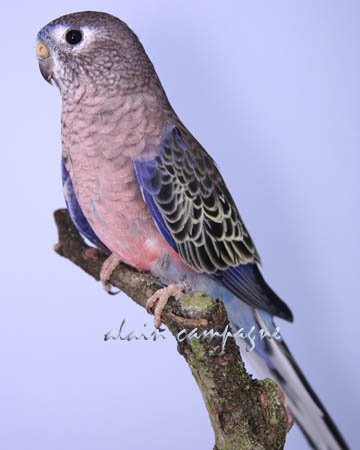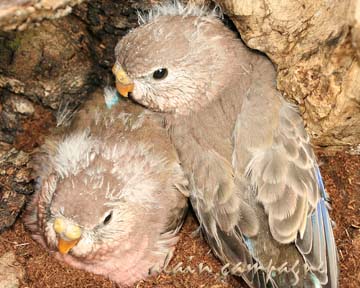Forshaw (1977 edition) indicates 19 cm
for size which seems a bit low as good show specimens should reach 23 cm. It is
not easy to describe, as it does not have coloured areas strictly defined (as
Neophema) but a range of varied and changing pastel colours specially in front
from throat to abdomen.
Blue line in forehead and above the eyes
in males, white forehead and reduced blue line in females. Lores and
periophthalmic region dusky white. In front part of cheeks each feather is
whitish (sometimes slightly pinkish), finely edged with brown, white becoming
pink towards the back of the head and blue towards the chin.


Throat and breast
pink with mottled brown, the pink
increasing to pure pink on chest and abdomen. Nape is brown slightly tinged
with pink, olive brown mantle and wings feathers lightly edged in pale brown,
bend of wing and outer webs of primaries violet-blue, undertail, flanks and sides
of rump blue. Under wings coverts blue, wing stripe absent in males, present in
females. The tail is dark brown washed with blue, lateral feathers tipped with
white.
The female is not as richly
coloured as the male, very few blue on front, no blue over the eye, pink
colour slightly paler on body.
The
immatures are similar to the hen , duller coloured, with a
pale horn beak, but young cocks sometimes show some
blue tinge very early in nest.
It is noticeable that we find less pure
wild coloured birds in our aviaries and that is important to encourage breeders
to keep a good stock free of any mutation. Increasing mutations and their
mixing can end in less typical birds with a doubtful genotype.
